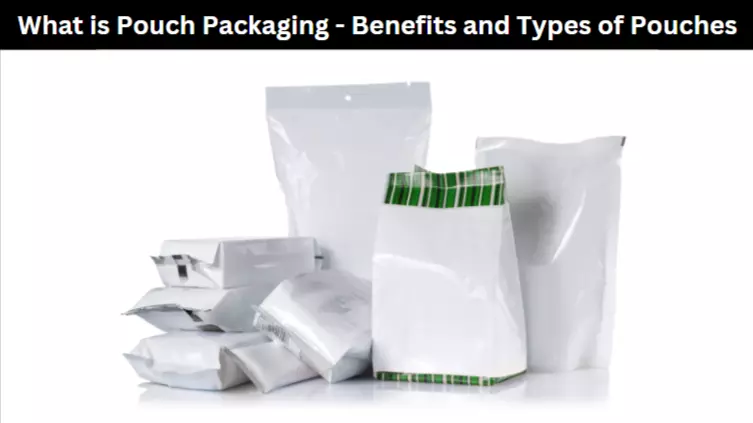The modern wrapping industry totals several dozen types of wrappers. Pouches take a large part of the sphere as they are one of the most widely used types of packaging. This class embraces a wide variety of wrappers from flat up to stand-up models. So, modern producers of goods have a wide choice of different types of pouches in packaging.
Modern packages play a far broader function than before. In addition to preserving product freshness and integrity, wrappers are highly beneficial for businesses due to the marketing issues. Businesses can draw consumer attention and encourage them to buy products by designing a user-friendly catching cover. Pouches provide a wide field for expressing ideas and communicating with customers.
Benefits of Pouch Packaging
Most products in modern stores are packed in pouches. Below let’s highlight the main pros that made pouch packaging so popular among the producers:
- Convenient storage. This type of wrapper is produced from flexible and durable materials that ensure product integrity throughout its lifetime right from the production facility up to delivery to consumers’ houses. Moreover, most pouches have zippers for repeated opening and closing, which allows for preserving freshness, aroma and high quality even after resealing the package.
- Lightweight. If compared to cardboard or glass, pouches weigh less, which makes them more favorable for transportation. In addition, shipping costs also become lower. Thus, manufacturers can save money on product delivery to retail points without compromising the integrity of the cargo.
- Perfect customization. This packaging is easy to customize. It is possible to decorate covers with finishes, as well as to add windows, handles, spouts, etc. Moreover, the materials used in their production are friendly to colors and inks. So, it is possible to apply any kind of picture or logo, as well as type all the needed information about the product and its content. Thus, producers can modify the wrapping according to the demands and preferences of customers.
- A wide variety of shapes and sizes. The volume of content doesn’t matter since pouches can be designed individually according to the required volume and shape.
- Sustainability. Different types of plastic pouches are recyclable and eco-friendly. Such wrappers are easier to sort by consumers. Containers require fewer resources and power to be produced, are cheaper to ship, and are able to meet the principles of a circular economy.
- Excellent protective qualities. The materials used for pouch wrapping production are durable and of high-quality. Packing products in such bags help keep them fresh and avoid contamination. Wrappers are resistant to stretching and tearing and are able to protect the content from environmental factors.
- Easy to fill. Due to a particular shape, products perfectly fit the package without wasting extra space. Perfect fitting is beneficial since no extra materials are used, no extra weight for transportation is calculated and no extra space on store shelves is occupied. In addition, the packages are convenient for use on conveyors.
- Durability. Package integrity and durability are determined by the multi-layer composition of wrappers. Shock- and tear-resistant materials are used. Due to the use of enhanced chemical compositions, packages are not sensitive to punctures, shaking, dropping or squeezing.
- Suitability for retail. Such wrappers perfectly draw consumers’ attention and stand out on store shelves. Thus, they can serve as a tool for consumer behavior management. If the design is properly developed, different kinds of pouches will help increase sales and attract more customers.
- Variety of material & finish choices. Producers offer various solutions for each particular case and type of product. Treating every client individually allows for picking the best solution for products.
Types of Packaging Pouches
Now, let’s consider the most common types of packaging pouches.
- Stand-up pouches (Doypacks) are multilayered packages that can stand up on store shelves due to a stable bottom part. Doypacks can be complemented with zippers, caps or other closures for more convenient and efficient use. They are used for both liquid and non-liquid products.
- Gusseted bags are also called 4-square pouches. They differ from the first group since they do not have a stable bottom: these wrappers remain bags. The main benefit of such wrappers is that they can be filled with huge amounts of products (up to dozens of kilos). They are equipped with euro slots, handling holes and breathable valves. Washing powders, pet food and other dry products are frequently packed in such bags.
- Shaped pouches. Such packages help attract customers’ attention to your product due to their original designs. This marketing step is perfect for new companies or for releasing a new product line to catch consumers’ interest.
- Flat pouches. These wrappers are sealed from all sides to guarantee food integrity and protect products from moisture and oxygen. They are commonly used for seeds, seasonings, packed tea, sweets and grocery.
As we can see, pouch wrappers are soundly widespread since can be applied in any field and for any product. The popularity of different types of flexible packaging pouches is explained by many factors, such as high quality and tear resistance, sustainability, brand customization and a wide diversity of materials, shapes, and sizes. That is why most food manufacturers give preference to this type of wrapping.
